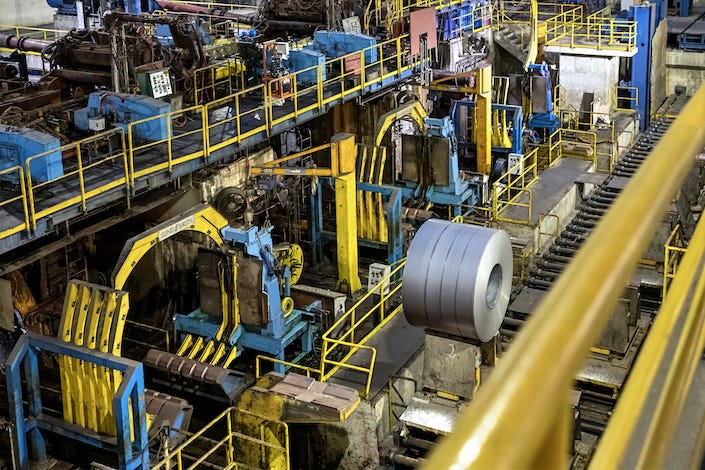Free to Read: Vietnam Imposes Anti-Dumping Tariffs on Chinese Steel Amid Rising U.S. Pressure
Vietnam says tariffs, affecting China’s major steel producers, will remain in place for five years
Vietnam has imposed anti-dumping duties on certain Chinese steel products, a move that analysts said aligns with growing U.S. pressure to curb transshipment and rerouting of Chinese exports through Southeast Asia.
Vietnam’s Ministry of Industry and Trade announced the new tariffs on Monday, saying they had taken effect on July 6 and would remain in place for five years. The duties target hot-rolled steel products originating from China, a key material in industrial manufacturing.
The tariffs will affect more than 10 major Chinese steel producers, including China Baowu Steel Group Corp. Ltd., Ansteel Group Co. Ltd., Beijing Shougang Co. Ltd., Inner Mongolia Baotou Steel Union Co. Ltd., Jiangsu Hebei Iron and Steel, Shagang Group Co. Ltd. and others. Tax rates have been set at three tiers: 27.83%, 26.94% and 23.1%.
The decision comes at a sensitive moment. Only days earlier, on July 2, U.S. President Donald Trump claimed on social media that the U.S. had reached a trade agreement with Vietnam. Under the deal, all Vietnamese exports to America would face a 20% tariff, while Chinese goods transshipped through Vietnam would be hit with a 40% duty.
Vietnam launched its anti-dumping investigation into Chinese hot-rolled coil (HRC) imports back in July 2024 and began imposing provisional duties in March 2025. According to the ministry, investigators found that Chinese HRC producers were dumping their exports at unfair prices, causing “substantial damage” to Vietnam’s domestic industry.
Some industry insiders argue that the timing of the formal duties suggests a coordinated move to assist the U.S. in shutting down indirect Chinese steel exports. Chinese HRC enjoys a notable cost advantage. On July 7, data from Mysteel showed the export price gap between Chinese and Vietnamese HRC stood at $42 per ton — a margin likely to be erased by the new tariffs. Chinese HRC futures closed at 3,191 yuan ($445) per ton on Monday.
Within Vietnam, the policy has caused division. HRC is widely used in downstream industries such as cold rolling, coating and pipe manufacturing. After further processing, these products are exported to Europe and the United States. Some stakeholders argue that curbing Chinese imports will hurt Vietnam’s competitiveness in these sectors, while others — including top domestic steelmaker Hoa Phat Group — support the move as a way to protect local producers.
Still, exemptions remain. Vietnam has waived anti-dumping duties on HRC products wider than 1,800mm, citing a domestic production shortfall.
HRC is a key semi-finished product in the steel industry, used in construction, shipbuilding, automotive and heavy machinery. China’s HRC exports to Vietnam have increased in recent years, moving Vietnam past South Korea to become China’s top steel export market since 2023. That year, China exported 9.06 million tons of steel to Vietnam, rising to 12.74 million tons in 2024 — increases of 66% and 40.5% year-on-year, respectively. HRC accounted for roughly 64% of those exports in 2023–2024, compared with 34% in 2020.
But exports slumped in 2025. From January to May, China shipped 4.08 million tons of steel to Vietnam, down 25.9% year-on-year. HRC exports dropped 43.6% to 2.31 million tons over the same period.
China remains a dominant force in global steel markets due to strong export competitiveness and weak domestic demand. In 2024, China exported 110.7 million tons of steel — the second-highest annual total ever and 6.34 million tons of steel billets. Together, they equaled around 121 million tons of crude steel, an all-time record. Exports in the first five months of 2025 rose another 8.5% to 48.47 million tons.
Rising protectionism is a growing challenge, however. In 2024 alone, Chinese steel products were hit by 33 trade remedy investigations — more than the total from 2020 to 2023 combined — with HRC the most targeted category. Vietnam’s case was the largest in scope and value in China’s steel trade history. In the first half of 2025, 14 more investigations have already been launched against Chinese steel exports.




